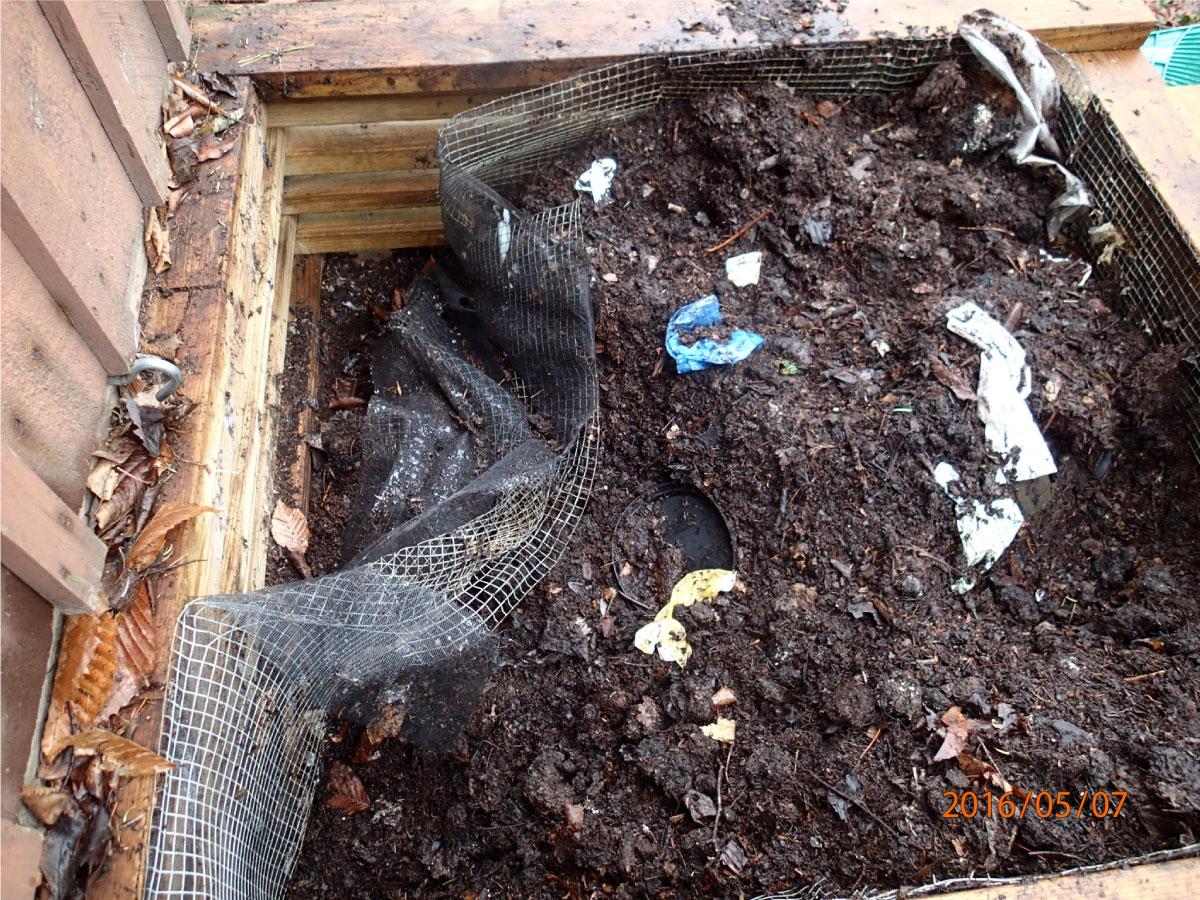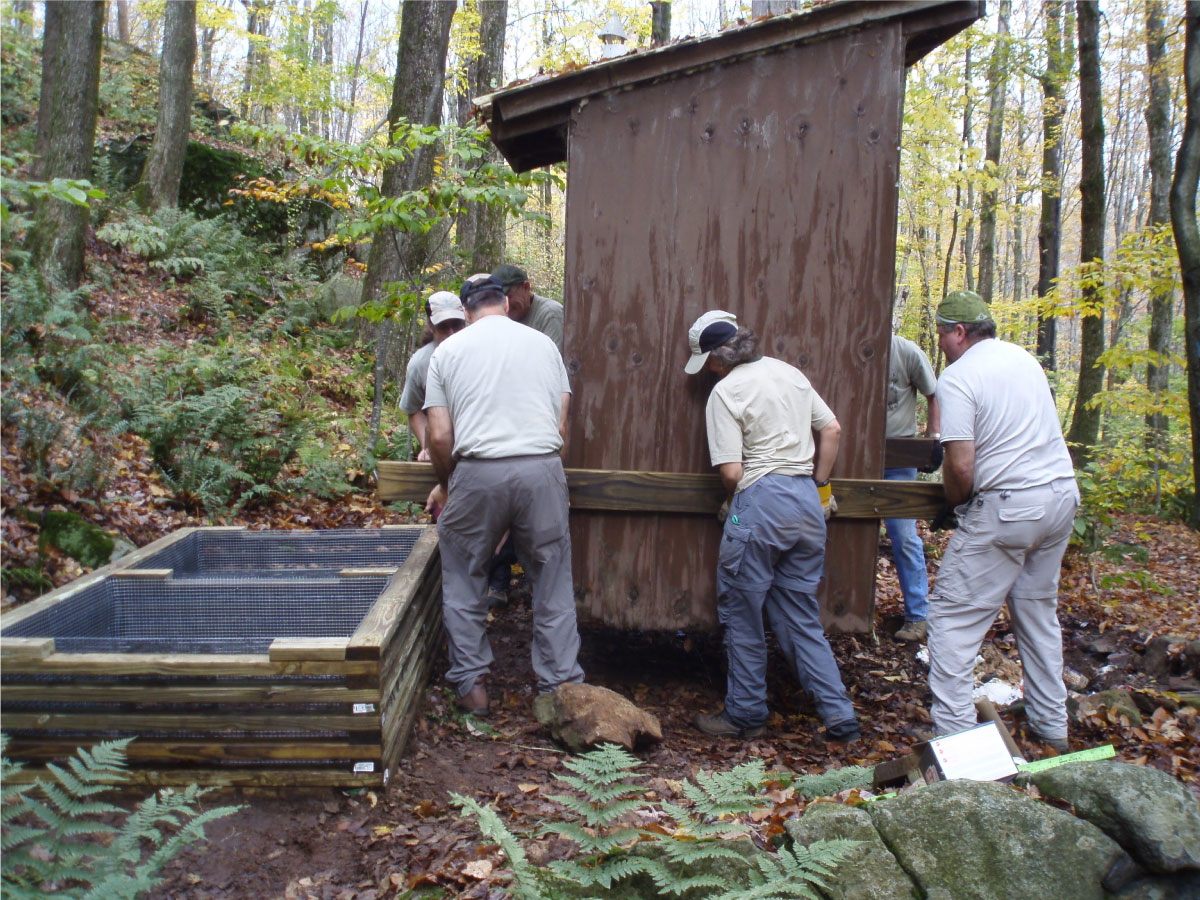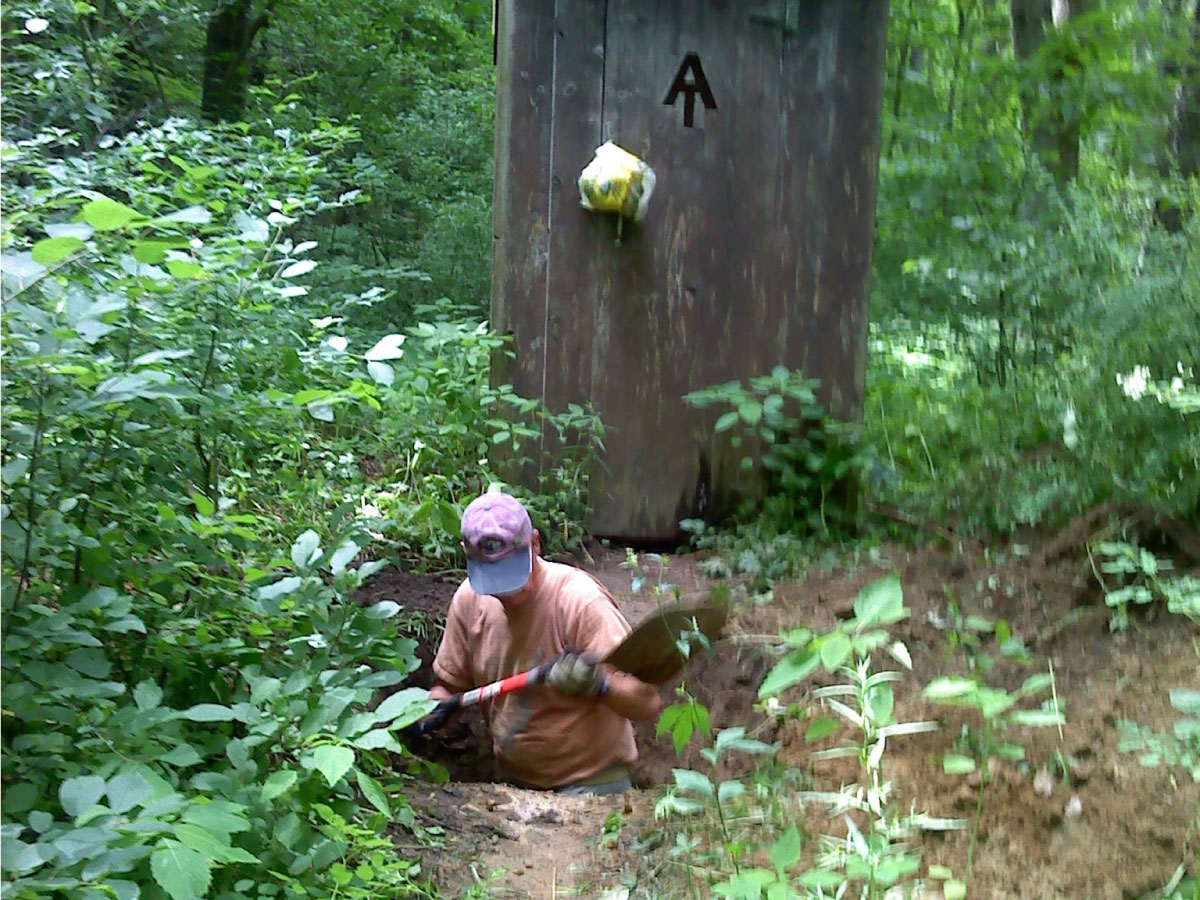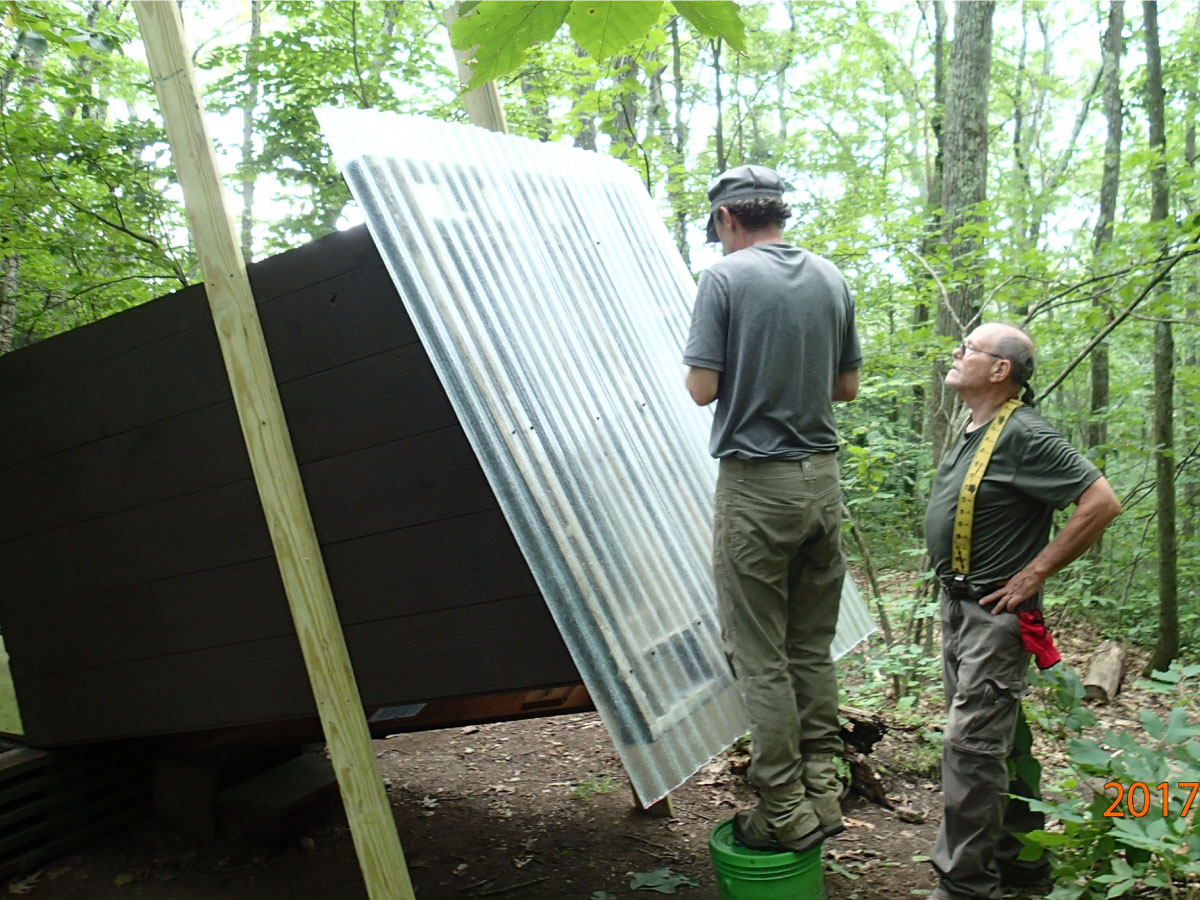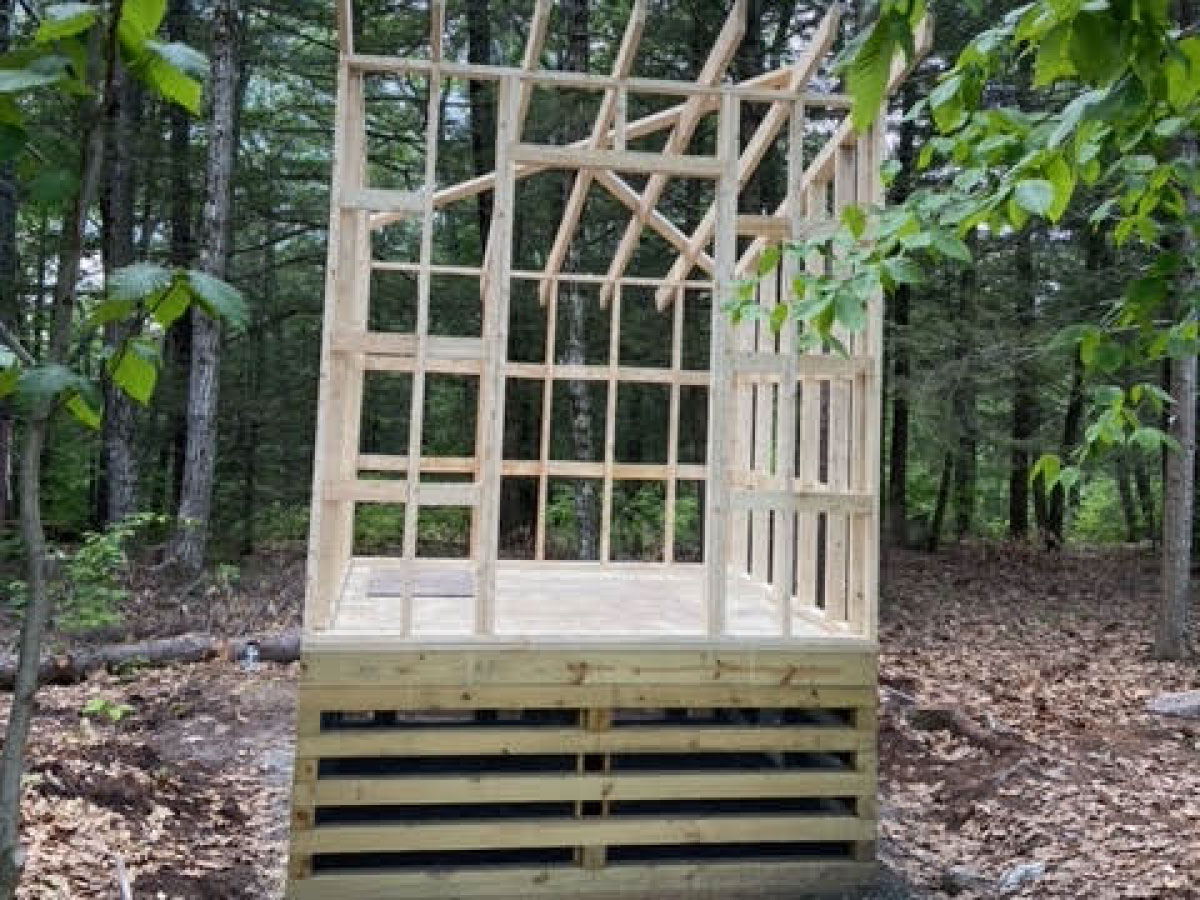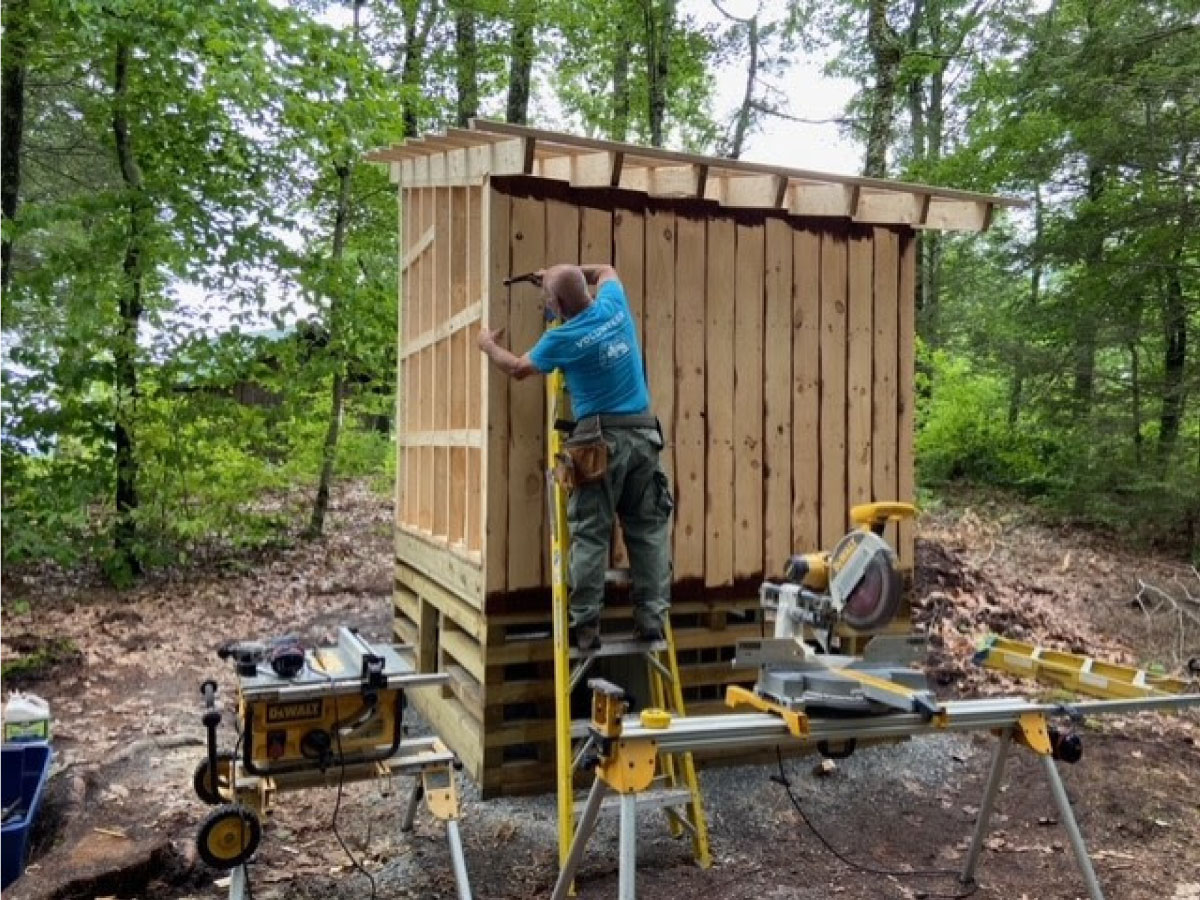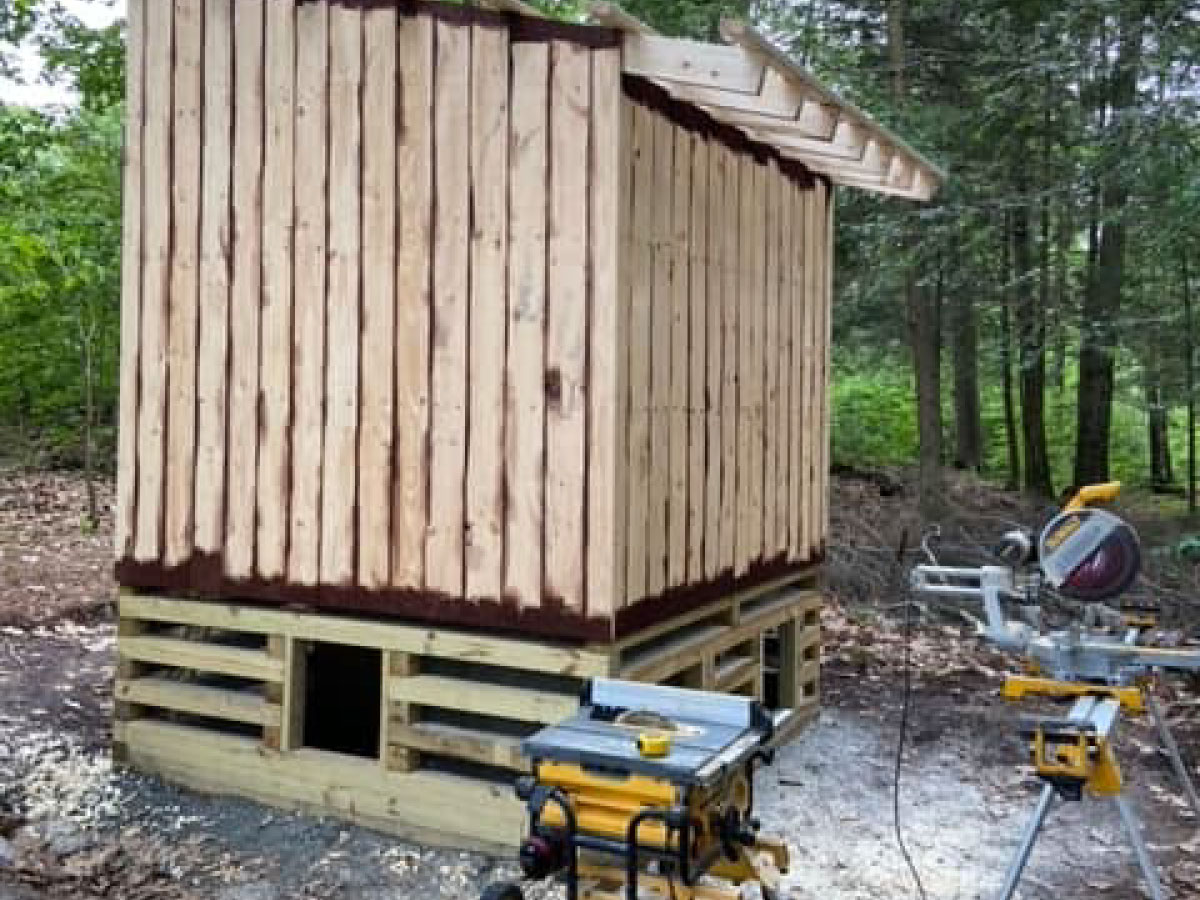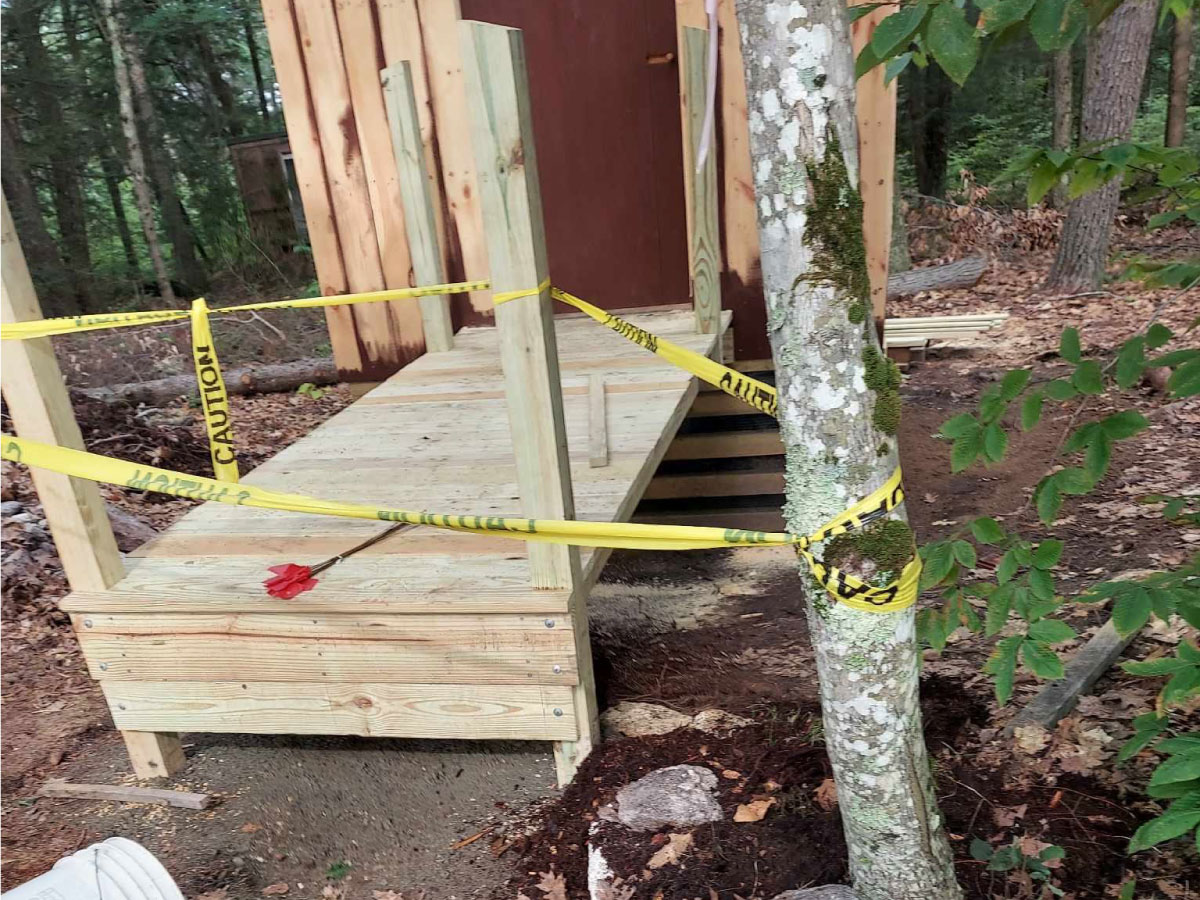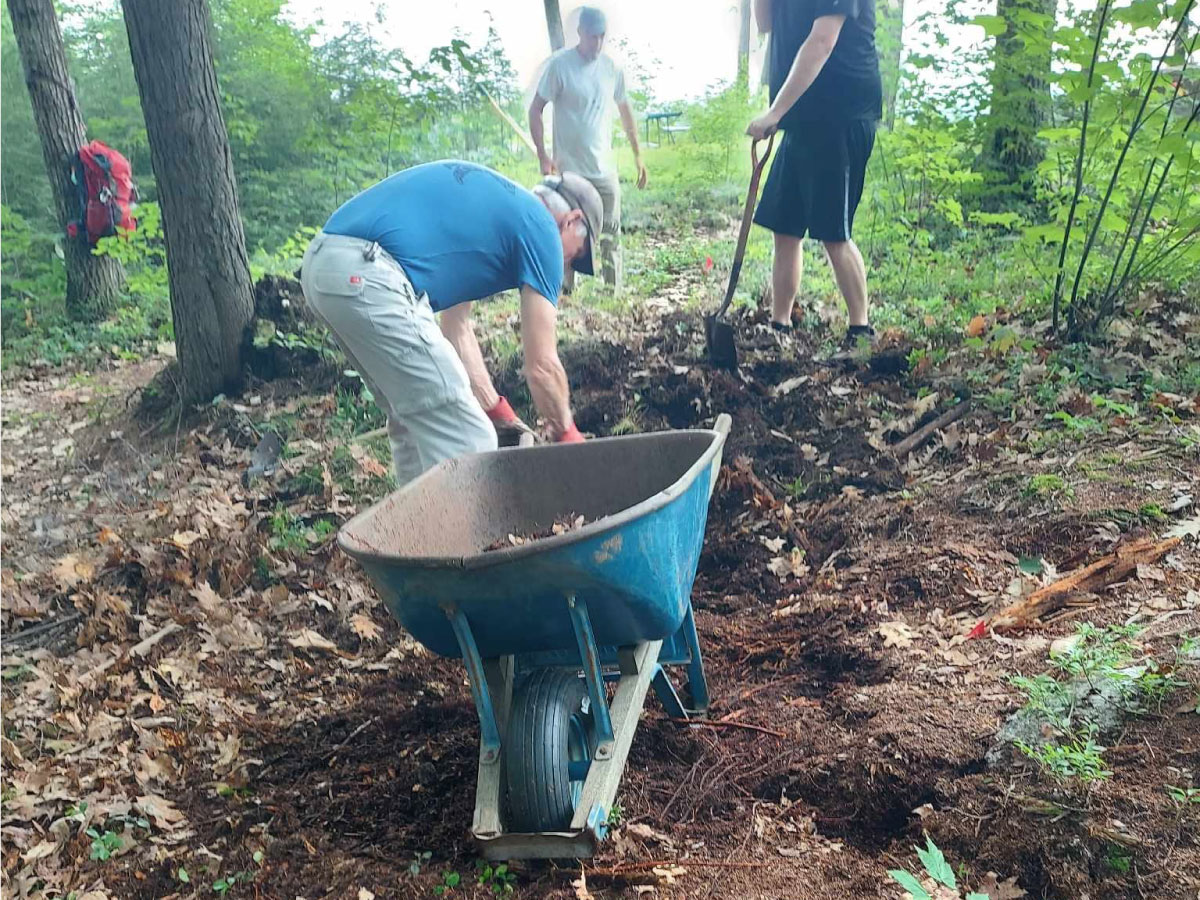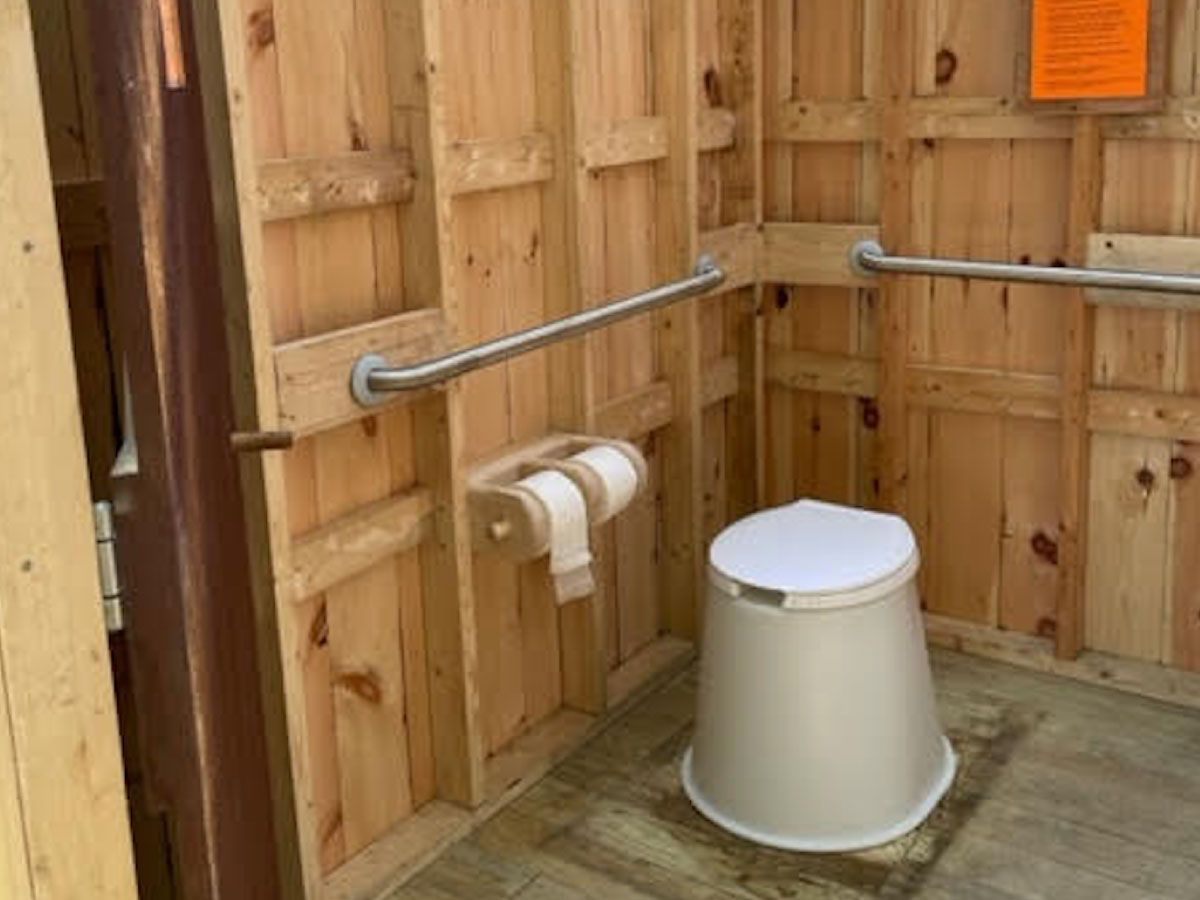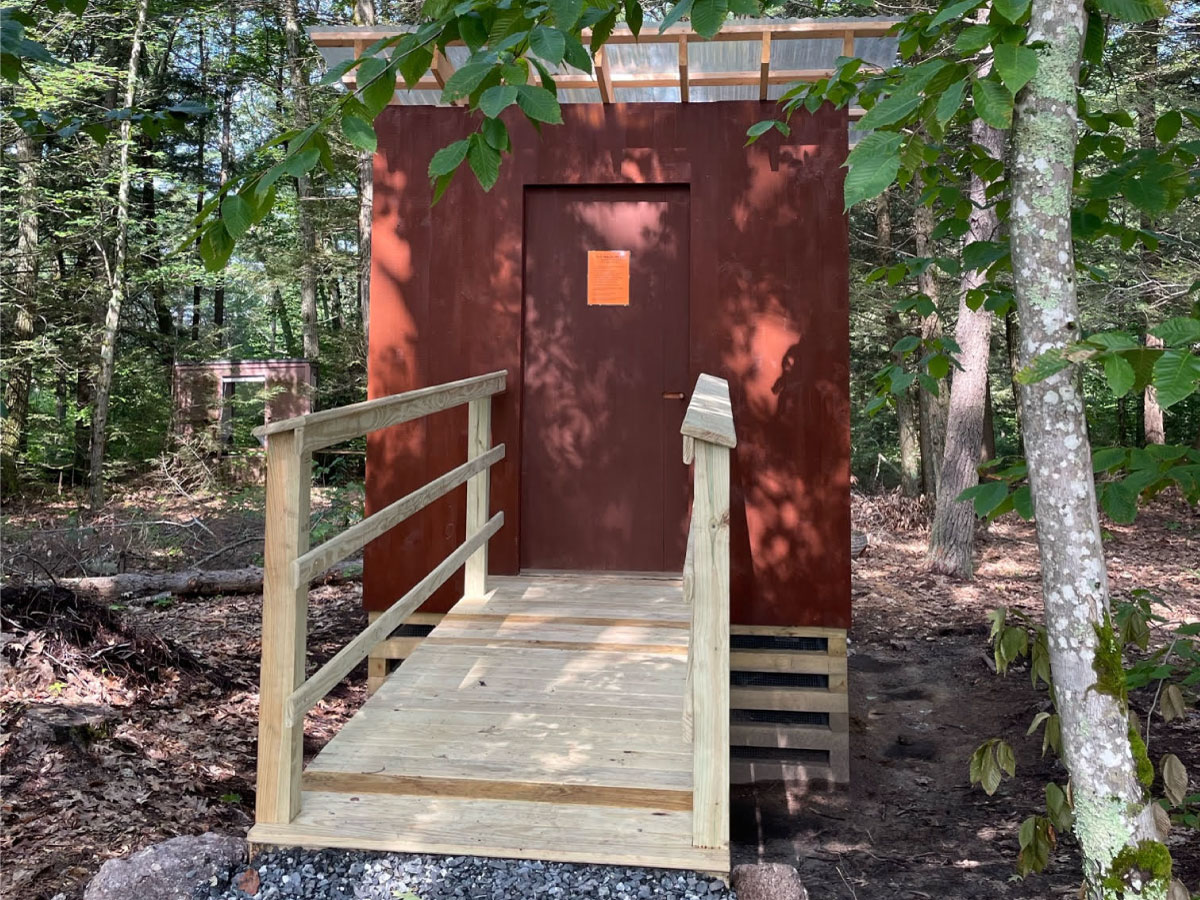Pit Privy Replacements
Cosmo Catalano, Jr., A.T. Committee
Improper disposal of human waste at heavily-used overnight sites causes pollution of soil, groundwater and surface water and degrades the experience of backcountry users. Our chapter's trail management committees are working to improve waste disposal facilities on the trail systems we oversee by replacing environmentally-unfriendly pit privies with moldering privies.
Moldering privies – slow-composting, dry toilets – are backcountry outhouses that reduce the likelihood of human contact with waste and promote the aerobic conditions needed for the relatively rapid decomposition of this waste into nutrients that can eventually be safely returned to the local ecosystem. Such conditions allow free movement of air within the waste pile, permitting faster breakdown of material and reducing the potential for groundwater contamination (MassDEP, 2020).
Managing human waste in the backcountry is vital for the protection and enjoyment of the outdoors.
Managing human waste in the backcountry is vital for the protection and enjoyment of the outdoors.
Background
Traditional backcountry waste repositories include pit toilets and latrines, where anaerobic breakdown is slow. Pathogens may remain viable for years, and contaminants can leach into the surrounding area even after use has ceased. When pits fill up, new ones need to be dug (sometimes every 2-3 years) taking up valuable space at overnight sites. Composting toilets have been a major improvement over the pits: raw wastes are held apart from the surrounding site until sufficiently decomposed and then spread over the forest floor. Moldering privies were introduced in the mid 1990s by the Green Mountain Club (GMC). The first moldering privy was installed in 1997 on the Long Trail at Little Rock Pond in Vermont. Since then, GMC has refined their design and other clubs have experimented with the concept, including AMC (ATC, 2014). As of July 2023, the Western MA chapter has built and maintains 12 moldering privies on the Appalachian and New England Scenic trails. The remaining pit privies on the former will be decommissioned and replaced with moldering privies between 2025 and 2027.Operation
A moldering privy consists of two (or sometimes three) cribs, one for the active deposit of waste and an adjacent one where waste "rests" while the decomposition process continues. Typically, this takes several years, depending on the size of the chambers and level of use. In the highest use sites (or at high elevations with long winter conditions), a hot composting process is used to quickly (relatively) kill pathogens and render waste suitable for distribution. These types of privies require significant labor to manage and are usually found in our region at popular overnight sites in the White Mountains. For the moldering privies in our region, screened and ventilated cribs are located below the outhouse. The toilet is positioned so waste is deposited into one of the chambers until it fills up. The other chamber holds previously deposited waste while it molders. Users are asked to toss in a handful of wood shavings after each use. These are brought to the site by volunteers or staff. At some sites, locally collected duff from the layer of soil just beneath leaf litter is used instead of wood shavings. These bulking agents prevent the waste from compacting into an airtight mass. They also supply carbon, necessary because human waste has too little to compost properly. The waste needs water, too (supplied by urine), which percolates slowly through the pile. Some of this liquid eventually evaporates while the rest is naturally treated by passing through the pile and upper soil layers. Staff or volunteers may stir the material in the resting side of the privy to encourage decomposition. The less pleasant task of "knocking the cone" is required to evenly distribute the fresh waste in the active side as it tends to pile up under the seat. When the active chamber is full, the outhouse itself or the pedestal* is moved to the adjacent chamber . The full chamber is then topped with a layer of shavings and partially covered to let rain moisten but not drown it. While the second chamber fills, the "resting side" composts in the first one (usually for at least two seasons), after which it can be spread thinly in the adjacent woodlands or buried.Use
Moldering privies are designed for locations that are remote, do not have plumbed water, and are accessed only by hiking or paddling. They typically must be approved by the local land manager and/or board of health prior to construction and use. Some privies are fully enclosed, others may only have privacy panels. Privies at remote sites are usually built and maintained by volunteers and are a critical part of protecting the environment and making it possible for visitors to have a safe and enjoyable experience. Please respect the work of these folks when you make use of the facilities they work hard to maintain.*New privies generally follow universal design requirements, providing access to visitors of all abilities. These are typically larger and feature a pedestal-style "throne" that can be moved over the empty crib when the active one fills up.
Conservation Research Advocacy
Next Initiative: Sustainability in the Tyringham Valley »
